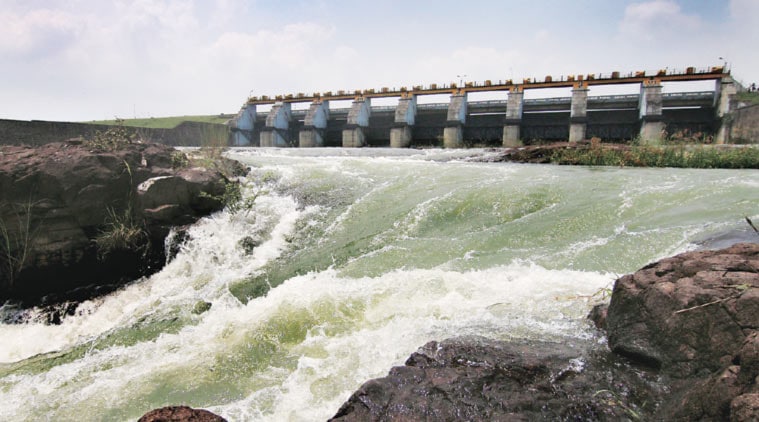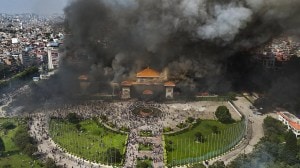Stay updated with the latest - Click here to follow us on Instagram
Maharashtra govt to take up ambitious water grid project to curb drought menace
List of 16 to 18 projects sent to Centre; Koyna, Jayakwadi, Ujjaini, Isapur, Totladoh on state’s radar.
 During Fadnavis’s tour of Solapur, locals told him that a canal project worth Rs 30 crore had been pending for decades.
During Fadnavis’s tour of Solapur, locals told him that a canal project worth Rs 30 crore had been pending for decades.
THE MAHARASHTRA government will soon build a scientific water grid infrastructure to connect dams, rivers, tributaries and villages. The plan is expected to mitigate the effects of drought, currently encompassing an estimated 25,000 villages.
The state has also sought the Centre’s help to push its long-pending river linking projects for better utilisation of water. There are about 16 to 18 such proposed projects. Chief minister Devendra Fadnavis said, “We have taken the decision to set up a water grid to maximise the use of water in dams and rivers through scientific inter-linking to drought-hit villages.”
Government officials said that all major dams, such as Koyna (Satara), Jayakwadi (Aurangabad), Ujjani (Solapur), Isapur (Hingoli) and Totladoh (Ramtek) need to be revisited to see how their water storage can better serve the cut-off villages.
[related-post]
During Fadnavis’s tour of drought-hit districts, locals in Solapur informed the visiting team that a canal project worth Rs 30 crore has been pending for decades. Several such examples were cited in every district. Officials said that these will be audited and correctional steps taken where required.
Outlining the shortcomings in planning, Fadnavis said, “Instead of depending 90 per cent on rainfed irrigation we have decided to optimise the current resources through proper planning and filling up gaps.”
Jayakwadi and Ujjani are the two major sources of water in Marathwada, western Maharashtra and parts of North Maharashtra. “We are working out how best we can interlink these dams with other rivers and its tributaries to divert or utilise water for drought-hit villages,” the chief minister added.
Simultaneously, a list of 16 to 18 rivers that can be inter-linked has been prepared and sent to the Centre. Rivers such as Narmada, Vainganga, Damanganaga, Upper Ghat Godavari, North Konkan Godavari, Central Konkan Bhima, Tapi, Nal Ganga and Vaid Ganga can be inter-linked to ensure optimum use of water, officials said.
While acknowledging that river linking and dam linking would be an expensive project, the state government believes that they will have to proceed as there is no alternative. Expenditure on drought relief alone touched Rs 7,000 crore last year, and the amount is expected to be on similar lines this year too.
The state with 18 per cent irrigation on cultivable land is way below the national average of 44 per cent. The current government has set an ambitious target increasing irrigation to up to 40 per cent in the next four years, mainly through the ‘Jalyukta Shivar’ water conservation projects.








